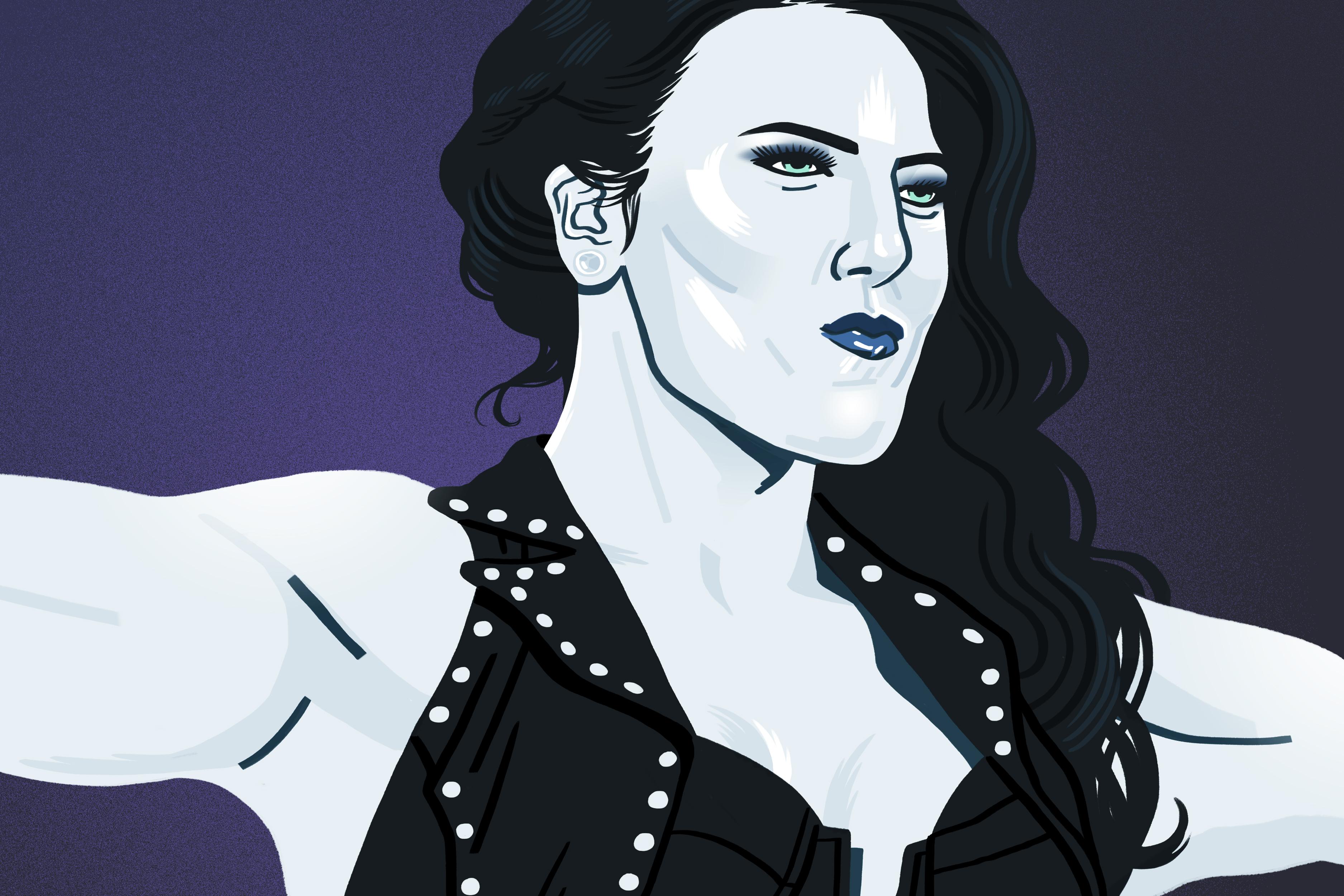Is Tessa Blanchard Wrestling’s Future?
Pro wrestling’s hottest prospect is a third-generation standout—an ultra-athletic, globe-trotting, man-wrestling, norm-defying phenom. Will her next maneuver be busting into the mainstream?It’s uncharacteristically cold outside on an early November afternoon in Astoria, Queens, and it’s not much warmer inside the 1,000-plus-capacity Melrose Ballroom, which is still hours away from filling seats and dimming lights for that evening’s Impact Wrestling TV taping. Former WWE cruiserweight Rich Swann is keeping warm by taking practice bumps in the ring, and Knockouts champion Taya Valkyrie is running frantically in search of her Postmates lunch delivery. Play-by-play announcer Josh Mathews arrives appropriately bundled in a waist-length winter coat and scarf, while nearly 300-pound slab of human Rhino defies the frigid conditions, sauntering in from a nearby bodega in a T-shirt and shorts. As with any traveling wrestling show, they are a motley bunch—half restless crew members and half colorful performers, most of the latter stereotypically larger than life. But sitting quietly in a folding chair by the side-wall-spanning bar, outfitted in a biceps-hugging sky-blue top and black stretch pants and hunched just enough to shrink her 5-foot-5 frame into an even more inconspicuous posture, is Impact’s biggest star: Tessa Blanchard.
At only 24 years old, Blanchard is inviting comparisons to greats from other sports. As Women of Wrestling and L.A. Lakers owner Jeanie Buss suggests in an email, “She is the LeBron James of the wrestling industry.” Her burgeoning career has inspired the kind of buzz that comes along once in a generation, the type of noise Ronda Rousey caused among MMA fans en route to crossover cultural celebrity. Though given Blanchard’s family history, it’s more like once every generation. The Charlotte, North Carolina, native is the daughter of WWE Hall of Famer and NWA legend—and original Four Horsemen member—Tully Blanchard, whose father, Joe, was a noted territorial-era grappler and promoter. But that’s not why she’s such a hot commodity. Like 10-time WWE women’s champion (and fellow North Carolinian) Charlotte Flair, whose father Ric was also a Horseman, Tessa is so much more than the sum of her pedigree’s parts. If Charlotte helped usher in a revolution in women’s wrestling by headlining WWE pay-per-views against opponents like Becky Lynch and Sasha Banks, Tessa has taken the onus on herself to make gender moot by credibly competing for both Impact and numerous worldwide promotions against not just female, but also male adversaries of all styles and profiles—from hypersexualized goofball Joey Ryan to current Impact world champion and death-match provocateur Sami Callihan, whom she will face for his title at Impact’s Hard to Kill PPV on January 12.
Her showdown with Callihan is, on Impact’s part, a calculated effort to steal some thunder away from the dueling powerhouses that are WWE and All Elite Wrestling, the latter of which emerged insurgently this year under the auspices of Cody Rhodes, his Elite cohort, and billionaire backer/NFL franchisee Tony Khan and quickly usurped Impact as the industry’s de facto no. 2 promotion. That imperative has been hastened by the recent majority acquisition of AXS TV by Impact’s parent company, Anthem Sports & Entertainment. The Mark Cuban–founded network now broadcasts Impact every Tuesday at 8 p.m. as a cornerstone of its combat-sports block, which also boasts weekly airings of New Japan Pro-Wrestling and Women of Wrestling (for whom the ever-busy Blanchard was, until recently, an undefeated world champion). For Blanchard, the match is an opportunity to concretize her following and seduce skeptics.
“How you’re booked is a huge indicator of how a company or someone perceives you as a talent,” she acknowledges. “I’ve definitely had to work my way up at Impact, and to now be challenging for the world championship is a huge honor and a privilege.”
Maybe so. But it’s also Impact’s best chance to demonstrate that it—and not WWE or AEW—can help its most valuable asset continue to break ground. Though a source close to Blanchard tells The Ringer that her Impact deal is up in mid-2020, she declined to comment on her contract status. In a phone call the following week, Impact executive vice president Scott D’Amore likewise avoided discussing deal specifics. He and his fellow decision-makers are, however, aware that the clock is ticking.
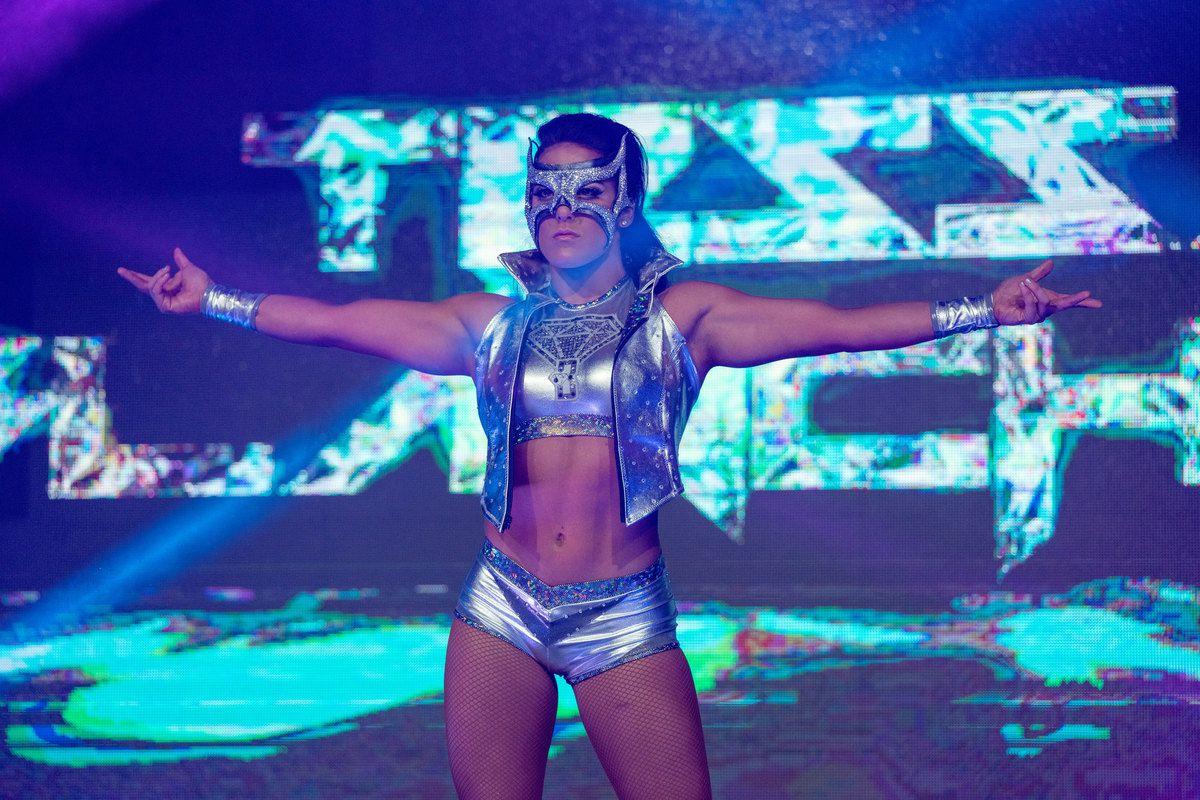
“Certainly, we fleshed out multiple options,” he says. “But coming off the run Tessa had as Knockouts champion, it seemed like the time was right to move Tessa into something different and exciting.” Pressed about how Impact can combat competing offers down the line, D’Amore conveys confidence that “we’ve developed an amazing relationship where we’re very collaborative with Tessa. Obviously, she’s going to get interest from any company in the world. There’s multiple components that are going to play into what she does. To us, Tessa’s been an invaluable member of our team and we’ll do everything in our power to continue to work with Tessa for as long as it works for both sides.”
All of this attention, some of it potentially premature, might explain why, throughout my interview with Blanchard her body language and careful responses could best be described as reluctant; reluctant to be too forthcoming with personal details, hesitant to offer any grist for the online gossip mill (she is no stranger to it), loathe to do anything that might sully Tully and the other Blanchards, and certainly self-conscious of the Impact publicist positioned several feet away to ensure she stays on message. (That message? Push Impact and Hard to Kill, and keep them guessing.)
The truth is that Tessa’s abilities as an expressive, gymnastic, utterly compelling professional wrestler have matured faster than her comfort level in talking about it all to a virtual stranger. “I don’t even remember my childhood too much,” she says when asked to describe her youth. She and her three siblings had “a pretty happy life” and she “liked to go out in the wilderness.” She continues: “I don’t know. I was a normal kid. I ran down the cul de sac, played kickball, all those things. But I never wanted to be a wrestler until I turned 18.”
Tessa was more of a musical-theater enthusiast. She recalls enrolling at the Children’s Theatre of Charlotte, taking part in Shakespeare recitation contests and eventually acting in all her high school’s amateur productions. She was on the track team, too, but “musical theater was always my escape.”
It would be presumptuous to think that Blanchard initially avoided “sports entertainment” because of the complicated toll wrestling took on her home life, and Blanchard herself declined to elaborate on her family history. And there is no need, really. It’s public record, and common knowledge for any well-researched wrestling fan, that Tully experienced addiction during his 1980s heyday, and that his one-time in-ring rival, Terry “Magnum T.A.” Allen—whose career was cut short following a paralyzing car accident in 1986—would later take up with Tully’s wife, Courtney, with whom Tully had Tessa and her three siblings. (Terry and Courtney would later have Tessa’s twin half-siblings, Lucy and Tucker.)
By the time Tessa was 4, her parents had separated and she and her brother and sisters moved in full-time with Terry and Courtney. Once her parents officially divorced, it was arranged that Tully would visit the children twice a month (when his work prompted a move from the Charlotte region to Dallas, he would fly back once a month, in his telling). By that point, Tully had sobered up, embraced Christianity, and committed himself to prison ministry (he maintains an active ministry to this day). Tessa’s recollection of those years isn’t the only one that isn’t entirely lucid, as Tully says the custodial arrangement he and Courtney had made it difficult to fully appreciate his daughter’s budding individuality.
“When you’re the every-other-weekend dad, you don’t get to see that stuff,” Tully—who can currently be seen most Wednesdays as ringside manager for Shawn Spears on AEW’s TNT series, Dynamite—explains in an interview. “Because all [your kids] have different interests and you’re trying to do stuff that’s fun for all of them, and you can’t find very many things like that. I know we used to go hiking a lot, and I got 30 days in the summer when I was in Dallas, and I’d take them to South Dakota and Puerto Rico. I tried to make it a memory for us, because we didn’t have the normal father-children experience.”
Tessa has spoken circumspectly in other media appearances about reaching a crossroads after high school, at which point she left home, briefly attended the University of North Carolina Charlotte for business, supported herself by working in a nightclub, and stopped communicating with members of her immediate family for a prolonged stretch. Asked about her period of voluntary self-sufficiency, she doesn’t quite classify it as a “rebellious” stage, but permits that, “Everybody’s got their story. Everyone goes through things, and my family and I have definitely gone through our fair share of things, so when I turned 18, I went and lived on my own for a year. There was a lot of growing up in that process of figuring it all out, and I think that’s why I’m so independent and strong-minded today.”
Allen still lives in Charlotte and works as a manager at a network-solutions company. He seconds that during Tessa’s adolescence, “We had some family dynamic things going on that were challenging, and she was a young, wild-child teenager that was trying to find her place in the world. And that wasn’t necessarily [being] in the house with two young twins. It wasn’t necessarily the best mix. Prior to embarking on the wrestling thing, she was doing things that would keep her out really late, so there was a time when she was on her own and living with some girlfriends and trying to find her way. When I was 18, I was up and out of the house and trying to find my way, too. And then she did end up coming back home and living with us for a good little bit before she took off and started traveling around the country.”
In fact, it was only when Tessa attended Tully and the Four Horsemen’s 2012 induction into WWE’s Hall of Fame in Miami that she found her calling. While she was bartending and waiting tables and partying with her college friends, she recounts asking herself, “‘What am I working toward?’ I didn’t really know what exactly I wanted to do, and when I went to the Hall of Fame with my dad, that sparked my interest.”
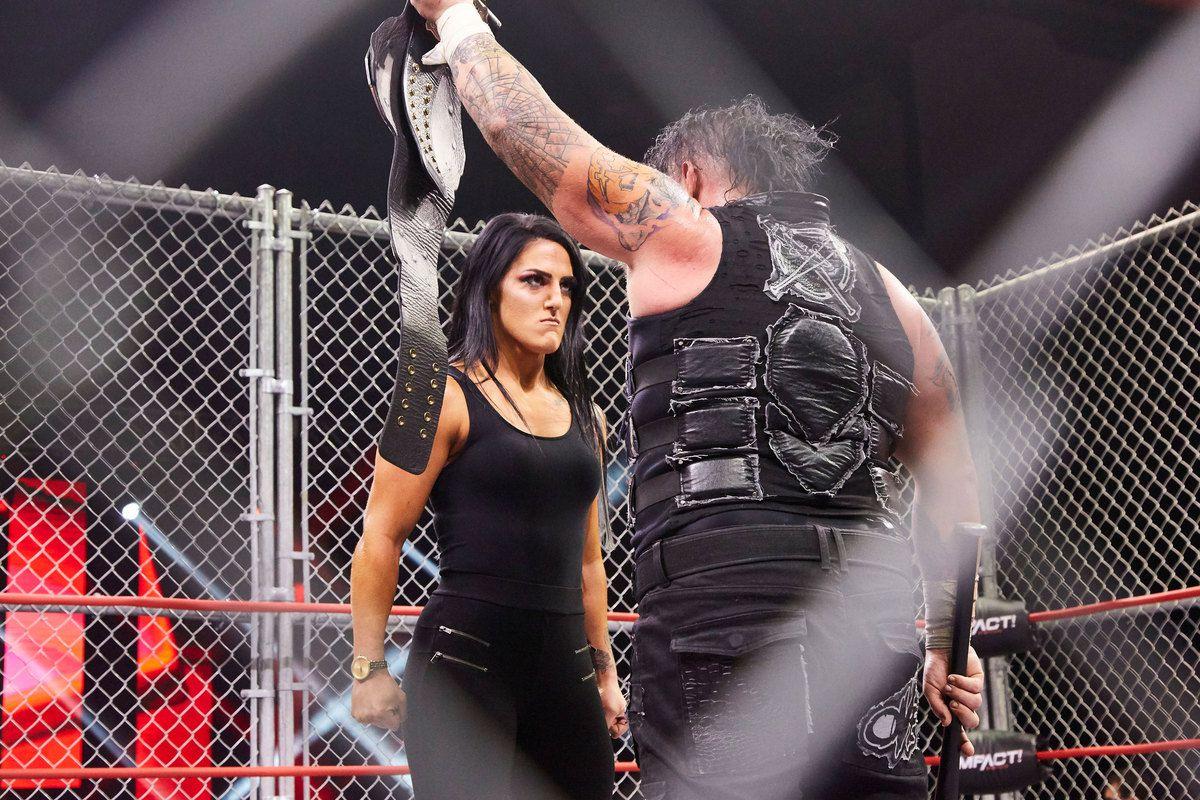
As Allen puts it, the lifelong lover of drama and born athlete “was getting to see now that this was really just an athletic theater in the round.” Still, that primal spark didn’t catch fire right away. Blanchard describes going through intermittent “lapses of interest” in taking next steps and says she didn’t have the faintest clue about how to make inroads in the wrestling business. It didn’t help that she was still only slowly reconciling with her mom and stepdad and felt it best to keep her ambitions private from her entire family.
After she turned 18 in 2013, Tessa finally enlisted in Highspots Wrestling School, which was about 20 minutes from where she lived at the time. Her trainer there was veteran NWA/WWE/WCW enhancement talent George South, and future WWE superstar Cedric Alexander was among her classmates. “I wasn’t good by any means my first day,” she concedes, “but I stuck with it.”
Tessa didn’t ask for no favors, and I sure wasn’t gonna give ’em. The wrestling ring don’t care what your name is.George South
South, whose accent more than befits his surname, assured me that “she didn’t ask for no favors, and I sure wasn’t gonna give ’em. The wrestling ring don’t care what your name is. We just worked hard. I cannot tell you how many late nights [we spent] keeping her there because she wanted to be there. We normally train for two and a half hours, and that wasn’t enough for her. She caught on pretty quick, because she hadn’t already been taught wrong.”
About six months into her training, South and Highspots owner Michael Bochicchio insisted that Tessa inform Tully and Terry about what she’d been up to. “I went down and watched her work and still remember it like it was yesterday,” Allen says. “She has that burning desire to be the best, and she had that work ethic from the very first steps.”
Wrestling may have contributed to Tessa’s complicated personal history, but she confirms—clearly aware of the irony—that it’s “also how I rekindled my relationship with my family again.” Today, she counts her mother, father, and stepfather as close counsel and support. And each of them, along with Tessa’s siblings, are full-throated in their encouragement, even if relationships among them remain nuanced. Tully is particularly candid about the fact that it took him 20 years to find peace with he and his wife’s falling out and his subsequent, relatively sporadic presence in his kids’ lives.
“All of my children are now grown, they know what happened,” he says. “I’ve had to forgive Terry and my ex-wife, and there’s no sense in being bitter. But I do not whitewash what actually happened. That’s why I don’t do pictures with Tessa and me and Terry. At AEW’s first show in Chicago, I almost got fired because I wasn’t gonna have both of us walk into the ring with her. She is my daughter.”
That much is clear when you watch Tessa in the ring. She takes on slightly different personas depending on the occasion—alpha heel for WOW, odds-beating babyface for Impact—but the through line is an unmistakably Tully-esque alchemy of unteachable swagger and studied physicality. Her recent tussle with women’s legend Gail Kim at Impact’s Rebellion PPV was less a wrestling match than an iteration of the sport’s time-honored, torch-passing tradition between outgoing icon and heir apparent.
Over the course of 13 minutes, Tessa—her hair jet black and pinned back as if in tribute to post-apocalyptic Tina Turner in Mad Max Beyond Thunderdome—showcased a complete range of crisp and compact offense, whether taking flight off of turnbuckles and cracking Kim’s face on her kneecaps or wearing her opponent down with ground-game submission maneuvers and manic right hands. But more crucially, she betrayed a life cycle of emotion via nose-to-nose stare downs, incredulous snarls, and, ultimately, a tearful embrace with Kim that wordlessly ordained Blanchard as the woman for everyone to beat.
“She understands the little things,” Kim tells The Ringer. “The facials, the in-between [moments], the comfort level, the passion and connecting to the fans. That’s something you sometimes can’t learn. She’s really got that natural instinct. I had heard about Tessa so much when she was on the independent scene, but when you see it up close, it’s a different animal. She truly is a once-in-a-generation talent.”
That’s precisely why questions persist about whether Blanchard is predestined for a future with WWE, where her father had a brief-but-not-unmemorable run with Arn Anderson as championship tag duo the Brain Busters. It’s also where, despite AEW’s emergence and the business’s slowly leveling playing field, most up-and-comers fantasize about being seen.
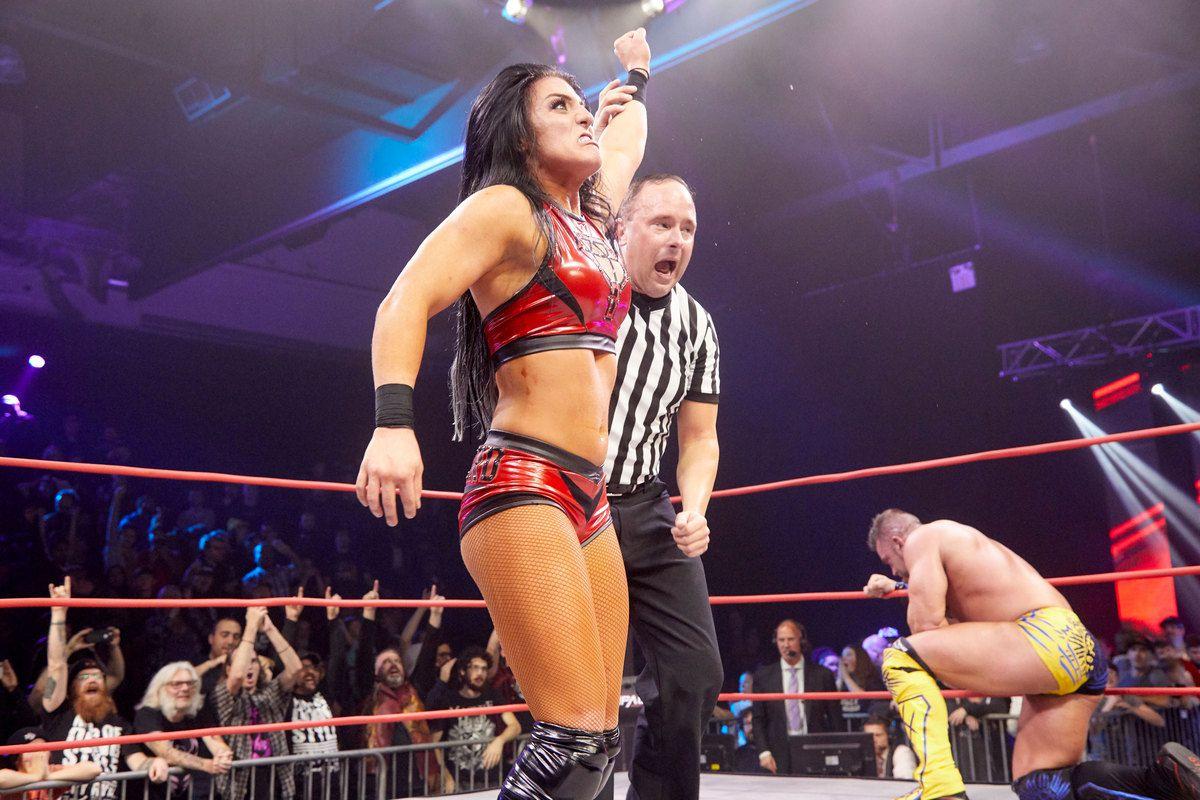
“I’m not going to speak for her, but obviously the WWE is still the pinnacle for wrestling promotions in the world,” Allen says. (As with her Impact contract status, Blanchard would not comment on past or future opportunities with companies other than those she presently performs for.) “The biggest platform in the world would be a WrestleMania moment. I know she has some big dreams, and I know that her and [Charlotte] Flair would be a storybook thing because of the dads and the background and the history.”
Unfortunately, after Tessa tried out for WWE in 2014, a formal offer never materialized. That’s when her real journey began. She set about paying her dues in dozens of independent and women’s promotions from coast to coast and abroad beginning in mid-2014, enduring locker room hazing from a rotating cast of bullies. South still gets emotional thinking about how “other women were very mean to her,” going so far one night as to steal her belongings from the dressing room while she was fighting in the ring. “Anything they could do to break her,” he adds.
I feel like when things clicked for me was my second tour of Japan, where Jessicka Havok and myself were a tag team. Something clicked where I knew who I was and I knew who I wanted to be in the ring and out of the ring.Tessa Blanchard
They didn’t. If anything, it primed her motivation to pivot to work with male competitors. And after a series of spring ’16 dates for Shimmer, Stardom, and Lucha Underground, among others—and even a few matches with WWE’s developmental brand, NXT—she began dabbling in intergender contests. The bookings ranged from a singles standoff against current NXT signee Dominik Dijakovic, then known as Donovan Dijak, to a mixed-tag presentation with Ricochet, current AEW staple Bea Priestley, and New Japan juggernaut Will Ospreay. All of this preceded what would become a career-defining, several-month-long overseas sojourn the following April.
“I feel like when things clicked for me was my second tour of Japan, where Jessicka Havok and myself were a tag team,” she says. “Something clicked where I knew who I was and I knew who I wanted to be in the ring and out of the ring.”
That stint set the table for her July ’17 appearance in WWE’s Mae Young Classic tournament, which was televised on the WWE Network. She was booked to lose in the first round to overall winner Kairi Sane, but to anyone watching, the outcome was a mere formality—Tessa had seemingly arrived. Given her skill, her reputation, and her pedigree (from Randy Orton and Bray Wyatt to Charlotte and Natalya, WWE’s roster is overflowing with legacy names), most onlookers assumed she would soon be a fixture on NXT or, hell, Raw or SmackDown. But she didn’t get a contract offer, and she didn’t reappear on WWE television. And immediately, rumors took root about why a deal had eluded her again.
For Tully, the matter was decidedly uncontroversial. “They didn’t invite her to go there at that time,” he states simply. “She certainly was not the performer then that she is now. The WWE is a mega-company, and I wasn’t there very long, so I can’t tell you a lot of the inner workings. All I can tell you is she has adapted quickly.”
Key to that adaptation has been her dedication to wrestling men. Since being spurned by WWE in ’17, she’s fought primarily for Impact, AAA in Mexico, and WOW, while also freelancing for Wrestle Circus and other smallish promotions around the country. She has subsequently torn through male competition, holding her own against power-lifting freaks (Brian Cage), agile hybrids (Scorpio Sky), hardcore idols (Callihan), and midsize charisma machines (Ryan, David Starr). That the bouts are scripted or that the men work double time to protect her from injury isn’t the point. That applies no more or less than it does when one man squares off against another, comparatively undersized man. What matters is the opportunity, how someone perceives you as a talent. What matters is that Tessa gives you, her audience, permission to not only suspend disbelief but put it on ice. Every bit of her inner thespian is laid bare as she takes advantage of the heightened circumstances and helps stage a flawless high-wire act with operatic emotion. Her evolution has been pro wrestling’s.
“It’s a style of wrestling, just like there’s strong style and lucha libre,” Blanchard suggests of intergender, which has come a long way since Andy Kaufman satirized (we think) the sport’s prevailing chauvinism by challenging—and getting his ass handed to him by—female opponents. Two decades later, Chyna changed mores in the Attitude Era by winning WWE’s Intercontinental Championship by brute-forcing the belt away from Jeff Jarrett. But as modern wrestling has become more acrobatic, match choreography has finally bridged the gender gap. Today, despite some measure of debate about the optics of it all, independent promotions in particular are cashing in on the phenomenon, up-and-coming names such as Priscilla Kelly are making waves, and savvy male talent like Joey Ryan are leveraging it as their bread and butter.
Blanchard accepts that “some people might like this style, some people might not. But I believe there’s a way to do it and to tell that story. I believe there’s a wrong way to go about it, and when people think of intergender wrestling without having seen myself in a match, they may write it off, but I love when someone’s not a huge fan of it, but maybe they’re open to watching it. When someone comes to me and they say, ‘Now I get it,’ after watching me, that’s pretty cool, because we accomplished something.”
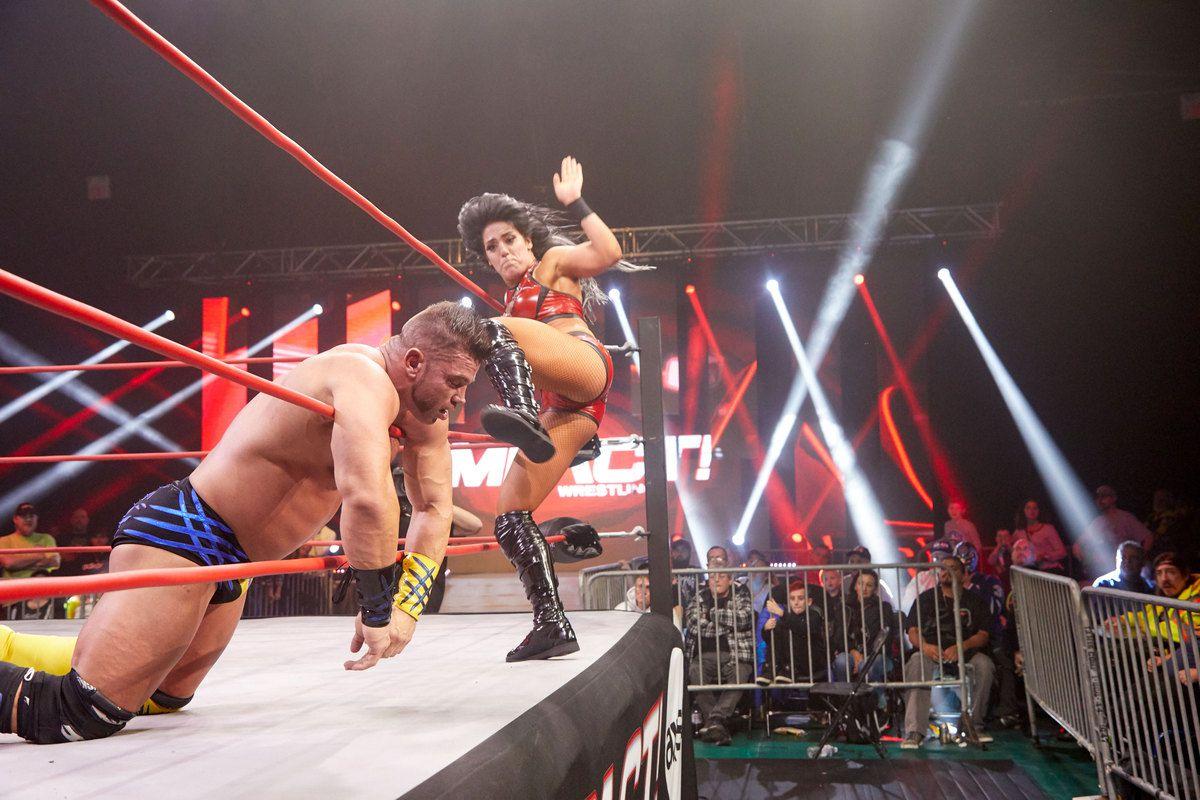
Her father and stepfather admit to having some reservations, as anyone might, about their daughter putting her body on the line against guys twice (or three or four times) her size, night after night. And while Kim, a women’s trailblazer in her own right, finds Tessa believable against more testosteronal adversaries, she says that when it comes to intergender wrestling as a more pervasive trend, “I’m very old school, so I don’t love it.”
Starr, who’s faced Blanchard in singles and mixed-tag scenarios, is more bullish on the movement and quick to ID her as its queen. “I would assume she doesn’t want to be recognized as the best women’s wrestler,” he says by way of Skype from his home in London. “She just wants to be recognized as the best wrestler.”
I present this idea to Blanchard, that she could be in the midst of a Serena Williams–like trajectory toward recognition as the best who does what she does—period. She sits more upright and beams a bit at the thought, though she stops short of saving a space for herself adjacent to Ms. Williams on a Mount Rushmore of defining sportswomen.
“I’ve always believed in myself, and that I can be one of the best in the world,” she says. “Where we are right now is such a special time for women’s athletes. There’s a face of every company that’s a woman, and I’m very blessed I get to be one of those. Where the road leads me? I’m not sure. Right now, my focus is on wrestling the best in the world.”
Kenny Herzog has covered everything from wrestling and television to politics and pop music for outlets including Rolling Stone, New York magazine, Esquire, Paste, Bleacher Report, Slate, ESPN, Nylon, Mic, and many more for nearly 20 years. You can find him on Twitter @kennyherzog.
